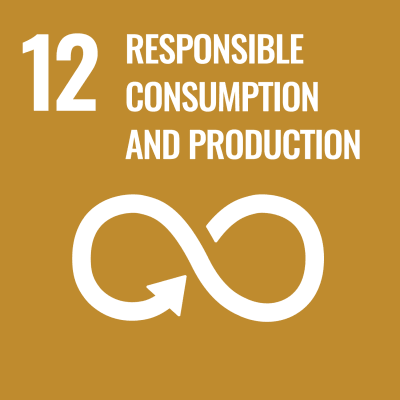-
Faculty of Science, Department of Applied Science
- Professor
- Yuko SUGIYAMA
- Research Field
Analytical Chemistry, Limnology, Geochemistry
- Keyword(s)
Dissolved Organic Matter
- Research theme
-
- Chemical Characterization of Dissolved Organic Matter in Aquatic Environment
Outline of research activitiesDissolved organic matter (DOM) is a ubiquitous material in the hydrosphere and plays many important roles. In soil water, DOM is not only the main energy source for microorganisms but changes the mobility and toxicity of other chemicals such as metal ions or organic pollutants by forming complex or adsorbing itself. DOM controls the growth rate of microorganisms and water quality of soil, river and even sea water. For these reasons, DOM dynamics is very important. To study DOM dynamics in aquatic ecosystems in qualitative and quantitative ways, we characterize DOM in various naturalwater samples using TOC analyzer, excitation-emission matrix fluorescence spectroscopy (EEM) and Fourier Transform Ion Cyclotron Resonance Mass Spectrometry (FT ICR MS).
- Desired cooperation
-
- Determination and/or Separation of dissolved organic molecules from natural waters.
-
Faculty of Science, Department of Applied Science
- Professor
- Yutaka NAGABUCHI
- Research Field
Analysis (Functional Differential Equations and Integral Equations )
- Keyword(s)
Functional Differential Equations, Integral Equations, Dynamics of solutions, Stability, Center manifolds
- Research theme
-
- Asymptotic properties of solutions (e.g. stability, peiodicity)
- Theory of center manifolds and analysis of dynamics of solutions
- Bifurcations of solutions
Outline of research activities
My research interests are in the area of differential equations, functional differential (or difference) equations and integral equations with infinite delay. We have established linear theory for these equations via functional analytic methods; and now develop theory of invariant manifolds, specifically center manifolds, together with theory of bifurcation structure of solutions.
- Desired cooperation
-
- Differential equations, functional differential equations and their applications
-
Faculty of Science, Department of Applied Science
- Associate professor
- Kazumasa INABA
- Research Field
Topology, Singularity theory
- Keyword(s)
Analytic map, Stable map, Knot
- Research theme
-
- Milnor fibrations of singularities
- Pertubations of maps
Outline of research activitiesI are investigating fiber bundle determined by singularities by using Newton polygon and pertubations of maps. This technique allows you to study singularities with combinational information. Based on this information, I am studying fibers of and monodromy of fiber bundles.
- Desired cooperation
-
- Geometry of singularities
- Applications of singularities
-
Faculty of Science, Department of Applied Science
- Associate professor
- Takafumi NIIHARA
- Research Field
Meteoritics, Mineralogy, Petrology, Cosmochemistry
- Keyword(s)
Solar System, Meteorites, Astrobiology, Shock metamorphism
- Research theme
-
- Evolution of the early Solar System
- Rock-Water interaction on Mars
- Impact history of the Solar System
Outline of research activities


The aim of the research is to clarify the origin and evolution of the Solar System using various types of meteorite samples. Analytical techniques I am using for the studies are optical microscope, scanning electron microscope, electron probe micro analyzer (EPMA) and Micro Raman spectroscopy etc. Our target bodies are all of the celestial bodies include Earth. I am also joining the deep space exploration. My E/PO activities are exhibitions of meteorites and public lectures.
- Desired cooperation
-
- Micro analyses for rock and minerals
- Astromaterials researches
- Exhibition and public lecture
-
Faculty of Science, Department of Applied Science
- Associate professor
- Toshiyuki FUJIKI
- Research Field
Paleoenvironmental analysis, Pollen analysis, Pollen morphology
- Keyword(s)
Paleovegetational reconstruction, Human activity, Airborne pollen
- Research theme
-
- Paleovegetational restoration and human activities using pollen analysis
- Measurement of hay fever pollen
Outline of research activities

I reconstruct paleovegetation by pollen analysis contained in sediments such as lakes and marshes, and elucidate how the environment changed in the past. I also research the human impacts on vegetation using charcoal analysis. Currently, I am focusing on the chronological study of human migration to the eastern Polynesia. In addition, we measure airborne pollen, understand the scattering status of hay fever pollen. And we report these data to the Japan Meteorological Association, and forecast scattering for the next year.

- Desired cooperation
-
- Restoration of paleoenvironment around archaeological sites
- Impacts on vegetation from events such as floods, tsunamis, and volcanic ash fall
-
Faculty of Science, Department of Applied Science
- Associate professor
- Yoichi TANABE
- Research Field
Physical properties of nano-materials, Condensed Mater physics
- Keyword(s)
Graphene, 3D curved surface,
- Research theme
-
- Elucidation of novel physical properties of 3D graphene
- Development of multifunctional carbon materials using local deformation of 3D curved surface
Outline of research activities

Graphene, integrated into the 3D nanoarchtecture with the smoothly interconnected curved surface, is promissing to clarify the novel properteis of the curved atomic layers adding to the amplifications of various material performance per unit projected area. We experimentally clarify the basic properties of the electrical transport on the 3D curved surface utilizing the high quality 3D graphene materials (so-called 3D nanoporous graphene). We also focus on the coexistence of the localized and itinerant electron properties originating from nitrogen-doping induced the local structural deformation of the 3D curved surface toward applications for the catalyst electrodes and thermoelectric materials using multifunctional electronic properties.

- Desired cooperation
-
- Evaluation of physical properties of carbon materials
-
Faculty of Science, Department of Applied Science
- Lecturer
- Youichi YAMAZAKI
- Research Field
Functional Analysis, Probability Theory, Integral Theory
- Keyword(s)
Probability, Integral, FunctionSpace, Limit
- Research theme
-
- Properties of integrals
- The relation of the meaning of probability and mathematical probability theory
- Limit theorem of various functions and stochastic fluctuations
Outline of research activities

The integral of a function is intuitively the “area under the graph”, but it is now generalized in many ways. And when functions “converge” the function in some sense, do their integrals also converge it? The question “is this true?” can be a yes or no. The answer depends on the situation. By clarifying the nature of the concept of integrals, I am trying to clarify the mechanism by which such things do or do not happen.
Also, probability and integration are closely related. The so-called “expected value” or “variance (standard deviation)” is the integral of a random variable, and stochastic integrals are used to analyze stochastically varying processes such as stock prices.
However, the concept of “probability” that currently prevails in mathematics does not match well enough the image that people have of “probability. For this reason, there is still a debate among philosophers as to what probability is. This also has a negative impact on probability in school education. By resolving this issue, the human way of thinking about probability should evolve.- Desired cooperation
-
- Probability debate
- Research on integrals
-
Faculty of Science, Department of Physics
- Professor
- Hiroki ISHIDA
- Research Field
Measurement and analysis of blood flow
- Keyword(s)
Blood flow, Cancer, Network of blood vessel
- Research theme
-
- Formation of new blood vessel network caused by carcinogenic.
- Visualization of opaque flow field by infrared light.
- High-speed processing of blood flow data by GPGPU.
Outline of research activitiesWe attempted to perform non-invasive breast cancer imaging using a reflection-type multipoint laser Doppler velocimeter to monitor blood flow. On day six after transplantation of cancer cells into mouse breast, we found that blood flow velocity in a blood vessel that extended into the tumor was increased compared to that in normal skin. The effect of carcinogenesis on blood flow over such a short period was shown using blood flow velocity imaging.

- Desired cooperation
-
- Development of a new non-invasive blood flow meter
-
Faculty of Science, Department of Physics
- Professor
- Kaoru YAMAMOTO
- Research Field
Applied Physics of Organic Materials
- Keyword(s)
Organic Conductors, Ferroelectrics, Microspectrosocpy, IR/Raman spectroscopy
- Research theme
-
- Unconventional Ferroelectrics
- Organic Conductors
Outline of research activities

Conduction electrons in organic conductors behave simultaneously as quantum waves and classical particles. Due to the dual nature of these electrons, molecular solids demonstrate a variety of unconventional properties. Our group is investigating the possibility of finding a ferroelectric material that is polarized by a change of electron distribution, using techniques such as IR-Raman spectroscopy, nonlinear optics, and thermo-electric measurements. The unusual macroscopic polarization resulting from electron ordering could pave the way for future applications of organic solids in fast-switching devices and opto-electronic transducers.

- Desired cooperation
-
- Optical Materials
- Organic thin films
- Spectroscopy
- Microscopy
-
Faculty of Science, Department of Physics
- Professor
- Minoru YONETA
- Research Field
Crystal growth and charaterization of II-VI compund semicondutors
- Keyword(s)
Nano materials growth, Compound semiconductor, Photoluminescence
- Research theme
-
- Fabrication and optical characterization of semiconductor quantum dots grown by using alternate beam supplying method
Outline of research activitiesWe study the growth of thin film of a compound semiconductor, and are investigating those fundamental physical and chemical characteristics. Moreover, we are investigating the characteristic of the quantum dot of a compound semiconductor ,and are studying the application to an electronics device.

- Desired cooperation
-
- Crystal growth of II-VI compound semiconductor
- Characterization of compound semiconductor by low temperature phtoluminsecece measurement
- Study of compound semiconductors by Ultraviolet and Visible Absorption Spectroscopy
-
Faculty of Science, Department of Physics
- Professor
- Yoshiki IMAI
- Research Field
Condensed Matter Theory
- Keyword(s)
Topological Materials, Strongly Correlated Electron Systems, First Principles Calculation
- Research theme
-
- Exploration and analysis of novel topological superconductors with broken time-reversal symmetry
- Magnetic property at the interface of heterostructures
Outline of research activities
Topology is a field of mathematics to study the properties of objects under continuous deformations. The classification of objects by means of number of the holes (corresponding to the topological number) indicates that a doughnut is identical with a mag with genus g=1. In topological materials whose wave functions are characterized by the topological number, electrons can move at very high speed near the edges. In contrast to conventional metals, they are less affected by defects in the crystal and/or impurities. Thus topological materials have received interest as highly functional materials toward next-generation devices.
We focus on topological materials and clarify the fundamental and transport properties, in which theoretical techniques such as the many-body quantum theory and the first principles methods are being applied to those.

- Desired cooperation
-
- Quantum many-body physics
- Material analysis with first principles calculation
-
Faculty of Science, Department of Physics
- Associate professor
- Kazuaki MATANO
- Research Field
Condensed Matter Physics, Intelligent Informatics
- Keyword(s)
Superconductivity, New Materials, Artificial Intelligence, Generative AI
- Research theme
-
- Physical Property Research on Superconductors
- Development of New Materials
- Development of Generative AI
Outline of research activities


Our laboratory explores new materials using AI as a core research theme. Materials are made from combinations of elements in the periodic table, and the number of possible combinations is nearly infinite—many useful materials remain undiscovered. Some of these may include superconductors, solar cells, thermoelectric materials, or quantum devices.
Superconductors, for example, have zero electrical resistance and could enable lossless power transmission and highly efficient energy devices. However, known superconductors only work at very low temperatures. Discovering room-temperature superconductors remains a major scientific challenge.
Traditionally, material discovery has relied on researchers’ knowledge and intuition. Today, AI technologies such as generative AI and machine learning can analyze large datasets of material properties and predict those of unknown compounds. This data-driven approach aligns well with modern physics, especially statistical and quantum mechanics.
In our lab, we build AI models trained on material databases to predict which chemical compositions or structures may have desirable properties. Promising candidates are synthesized and evaluated through experiments such as X-ray diffraction and resistivity measurements. Feedback from these experiments is used to improve the AI models.- Desired cooperation
-
- Research on Superconducting Materials
- Development of Generative AI
- Physics Education
-
Faculty of Science, Department of Physics
- Associate professor
- Keiko NAGAO
- Research Field
Particle Physics, Particle Cosmology
- Keyword(s)
Particle Physics, Dark Matter, Neutrino
- Research theme
-
- Particle Physics, Particle Cosmology
- Dark Matter
- Neutrino
Outline of research activities
Weakly interacting massive particles (WIMPs) are promising candidate for dark matter. Direct detection experiments of dark matter aim to detect nuclear recoil emitted by scattering of WIMPs and standard model particles. In directional dark matter detection, not only recoil energy but also direction of nuclear recoil are expected to be detected. It has the potential to give constraints on dark matter nature such as velocity distribution model. I theoretically study the possibility of the directional dark matter detection. My another interest is neutrino physics. Neutrino would be a hint to the Physics beyond the Standard Model as well as dark matter. I have constructed new theoretical models including both dark matter and neutrinos.
- Desired cooperation
-
- Particle Physics, Particle Cosmology
- Dark Matter
- Neutrino
-
Faculty of Science, Department of Physics
- Associate professor
- Makoto WATANABE
- Research Field
Optical and Infrared Astronomy, Astronomical Instrumentation
- Keyword(s)
Astronomy, Imaging, Spectroscopy, Polarimetry, Adaptive Optics, Wavefront Sensing, Active Galactic Nuclei
- Research theme
-
- Adaptive optics and its applications
- Internal structure, formation, and evolution of active galactic nuclei, and the interaction with host galaxy
Outline of research activities

The spatial resolution of images observed by the ground-based astronomical telescope is limited because of the wavefront distortion suffered by the turbulence of the earth atmosphere. In order to overcome this problem, we are studying the adaptive optics and developing the astronomical instruments with adaptive optics, which corrects the wavefront distortion in real-time. The applications of this technology into biological and medical fields are also being studied.
In addition, we are studying the internal structure, physical condition, formation, and evolution of the active galactic nuclei, which are active objects emitting a huge energy from the very compact region by mass accretion into the super-massive black hole at the center of galaxy, observing them with time-variability monitoring, polarimetry, and adaptive optics.
- Desired cooperation
-
- Development of the telescopes, microscopes, and measuring instruments with adaptive optics
-
Faculty of Science, Department of Physics
- Lecturer
- Daisuke YAMAUCHI
- Research Field
Cosmology, Gravity theory
- Keyword(s)
Inflation, Dark Energy, Dark Ages
- Research theme
-
- Accelerated expansion of the Universe from a modification of general relativity
- Dark Universe explored by radio telescopes
Outline of research activities

The latest cosmological observations strongly suggest the surprising fact that the Universe is undergoing an accelerated expansion at two very different times, immediately after the birth of the Universe and at the present time. However, this fact is incompatible with the property that gravity is an attractive force. An interesting fact is that the latest observational results suggest that a modification of general relativity may be manifested in the very early and current Universe. I believe that the key to the search for essentially new observables is to observe the “Dark Ages” and “Cosmic Dawn”, in which information about the very early Universe is preserved. Through radio observations that can probe these epochs, I aim to unravel the detailed history of the Universe.

- Desired cooperation
-
- Studies on an accelerated expansion of the Universe in the context of modified theory of gravity
- Studies on cosmology with radio observations
-
Faculty of Science, Department of Physics
- Lecturer
- Tetsuro KUBO
- Research Field
Condensed matter physics, Magnetism, Strongly-correlated electron systems, Toporogical materials
- Keyword(s)
Nuclear magnetic resonance (NMR) spectroscopy, f-electron systems, Weyl semimetals
- Research theme
-
- NMR study of strongly-correlated electron systems and toporogical materials
Outline of research activities


Our research interests span various quantum phenomena such as magnetism, superconductivity, and multipolar ordering in strongly-correlated electron systems, as well as Weyl fermion excitations in what are known as topological Weyl semimetals. The nuclear magnetic resonance (NMR) techniques we use are advantageous because they allow us to investigate microscopic electronic states on the laboratory scale.
We also have a keen interest in developing a mobile and easily reproducible NMR spectrometer by leveraging the latest radio frequency technologies.

- Desired cooperation
-
- Research in condensed matter physics using NMR techniques
- Development of mobile NMR spectrometers
-
Faculty of Science, Department of Chemistry
- Professor
- Makoto SAKAI
- Research Field
Laser spectroscopy, Molecular spectroscopy, Microscopy
- Keyword(s)
IR super-resolution, Picosecond laser
- Research theme
-
- IR super-resolution microscopy for biological samples
- IR super-resolution molecular imaging
- Molecular orientation imaging
- Chirality mapping
Outline of research activities

Microscopes are very important tools for studying biological samples. However, most of the microscopes cannot measure the vibrational molecular imaging based on molecular information. At the moment, only two microscopes are measureable. One is the Raman microscope, and the other is IR microscope, those are complementary relations. But these are not perfect. Especially, the IR microscope has very low spatial resolution about 10 µm, because of the diffraction limit by the IR wavelength. This is a serious problem for a microscope. To solve this problem, we have developed IR super-resolution microscope with a sub-micrometer spatial resolution by using vibrational sum-frequency generation (VSFG) detection, and have reported the applications to various biological samples such as human hair, avian feather, living cells and so on. By using this microscope, we can observe not only the vibrational molecular image with high spatial resolution but also the molecular orientation and chirality images.

- Desired cooperation
-
- Functional inorganic/organic materials
- Biological molecules such as protein, sugar, lipid, cell etc.
-
Faculty of Science, Department of Chemistry
- Professor
- Masanori YAMADA
- Research Field
Biopolymer
- Keyword(s)
DNA, Environmental material, Enegry material. Bioplastic
- Research theme
-
- Removal of harmful compounds by DNA
- Preparation of environmental material consisting of biopolymer
- Utilization of biopolymer as anhydrous proton conductors
- Preparation of bioplastics consisting of sustainable materials
Outline of research activities





Salmon milt, defatted soybeans, crab and shrimp shells, and cowhide have been discarded as an industrial waste around the world. Therefore, DNA, soy protein, chitin/chitosan, and collagen, which are obtained from these materials, are sustainable resources. Our research using sustainable resources is as follows; 1) removal of harmful organic compounds; 2) selective accumulation of metal ion; 3) development of anhydrous proton conducting material; and 4) development of bioplastic with the biodegradable property.

- Desired cooperation
-
- Development of environmental material
- Development of anhydrous proton conducting material using biopolymer
-
Faculty of Science, Department of Chemistry
- Professor
- Minoru MITSUMI
- Research Field
Coordination chemistry, Solid-state chemistry
- Keyword(s)
Visible light-driven redox catalysis, Photocatalytic H2 production, Photocatalytic CO2 reduction, Porous coordination polymers, Porphyrin chemistry, Mixed-valence complexes, Magnetic, dielectric and conductive materials
- Research theme
-
- Visible-light-driven redox catalysts for photocatalytic H2 production and CO2 reduction
- Multi-functional materials based on coordination polymers with redox-active bridging ligands
- One-dimensional d-electronic metals based on partially oxidized one-dimensional dinuclear platinum complexes
Outline of research activities


Metal complexes can exhibit functions and physical properties not achieved by organic or inorganic compounds alone by appropriately selecting the central metal ion and designing the organic π-electron ligands surrounding it. The characteristics of these complexes enable effective sunlight harvesting and various catalytic reactions utilizing its energy. In our laboratory, we are developing visible light-driven redox catalysts for photocatalytic H2 production and CO2 reduction using metal-porphyrin complexes, which can harvest visible light and catalyze various reactions. In research on functions and physical properties, we are developing coordination polymers with unique magnetic and dielectric properties based on mixed-valence states using redox-active ligands. Furthermore, we are developing one-dimensional d-electroninc metals based on partially oxidized one-dimensional dinuclear platinum complexes that exhibit stable metallic states at low temperatures.
- Desired cooperation
-
- Visible light-driven redox catalysis based on metal complexes for photocatalytic H2 production and CO2 reduction
- Metal complexes in general
-
Faculty of Science, Department of Chemistry
- Professor
- Takashi YOKOYAMA
- Research Field
Analytical chemistry, Separation science, Environmental analysis
- Keyword(s)
Flow analysis, Separation material, Analytical reagent, Chromatography
- Research theme
-
- Development of new selective analytical methods using flow injection analysis (FIA)
- Development of new separation and analytical methods using liquid chromatography (LC)
- Separation and analysis of dissolved organic compounds in natural waters
- Development of new separation materials
Outline of research activities


On the basis of FIA and LC in analytical methods using a liquid flow as much as possible to concern for the environment, we have studied to develop separation materials using carbon microparticles, analytical reagents specifically reacting with organic compounds, separation and analytical methods of dissolved organic compounds and bacteria in natural waters, a nano-LC which can separate and analyze an analyte in a sample volume of 1/1000000000 liters using a liquid flow volume of 1/1000000 liters, and separation and analytical methods using a self-reaction of sugars and amino acids.

- Desired cooperation
-
- Development of analytical methods using FIA
- Development of separation and analytical methods using LC
- Development of analytical methods for natural water samples
- Development of automatically analytical methods









